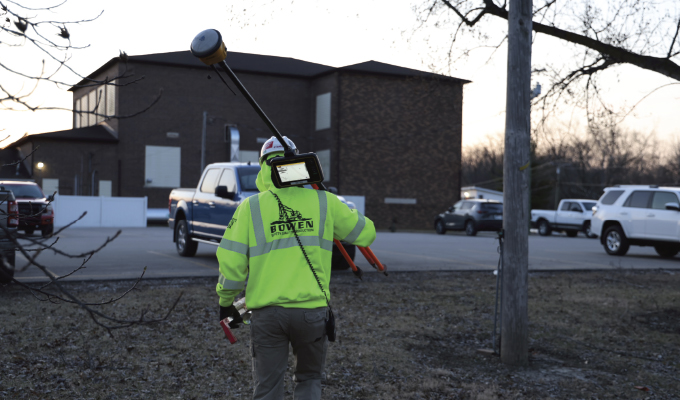Today’s construction projects demand more—larger scope, tighter timelines, and precision that leaves zero margin for error—all while skilled operators have become construction’s scarcest resource. For most contractors, these converging pressures create an impossible equation.
For Indianapolis-based Bowen Engineering, these challenges represent opportunity, not obstacles. The national general contractor has built its reputation completing and largely self-performing the technical, precision-critical work that many firms might avoid, such as municipal water-treatment facilities and complex industrial installations where a single miscalculation can cost millions.
What truly differentiates Bowen isn’t just their ability to handle both heavy civil work and intricate process systems in-house. It’s how they’ve leveraged cutting-edge technology to orchestrate these complex, multi-disciplinary operations with a level of precision that’s transforming both employee and customer expectations.
OPERATOR EXCITEMENT
For Bowen, what started 15 years ago as a simple GNSS surveying investment has evolved into something more powerful: a workforce transformation that’s given Bowen a strategic advantage in today’s strained labor market. Through their ongoing partnership with SITECH of Indiana, the company now operates 14 GNSS-enabled machines—but the real story isn’t the equipment count, it’s the demand from their own crews.
“Many of our operators appreciate the capabilities on these machines that allows them to complete tasks with accuracy and no rework,” explains Scott Heinzelman, survey controls engineer with Bowen. The technology has become so integral to daily operations that operators actively seek out these enhanced machines for their projects.
One seasoned operator captured the transformation perfectly: “On every project we’ve done in the past two years, I’ve had a GNSS-enabled machine. The benefit for me has been productivity. It’s particularly beneficial for digging pipe trenches where I can set offsets. These machines keep us right on elevation and provide a nice level dig across the entire area of work.”
This kind of enthusiasm has delivered an unexpected dividend in today’s stressed labor environment. “Finding operators in today’s labor market is a challenge,” Heinzelman confirms. “Our ability to maintain a high level of efficiency and quality in the field gives us a leg up.”
But workforce advantages are just the beginning of technology’s impact on Bowen’s bottom line.
PRECISION PAYOFF
When precision isn’t negotiable, technology becomes the difference between profit and disaster. For a project in Lafayette, Indiana, Bowen faced the challenge of constructing an underground water storage tank with a 22,000-square-foot bottom shaped like a cone, where even minor elevation errors could compromise structural integrity and balloon costs.
The scope was massive: excavating 30,000 cubic yards of dirt while establishing precise 1.5:1 side slopes and achieving an exact 2-percent grade on the tank bottom. Traditional methods would have required constant surveying, multiple grade checks, and the ever-present risk of costly rework.
“We looked to the grade control system to speed up work processes and reduce material costs. With our GNSS-enabled equipment, we were confident in the precision of the sloped open cut excavation in a safer environment,” Heinzelman explains. “The technology eliminated the need for someone checking points as the work was completed. We knew we were cutting it safely and the final product was uniform.”
The operational benefits extended beyond the initial excavation. “The same can be said when it comes time to backfill and finish grades on the jobsite. We even cut in ramps for our trucks to get in and out based off the machine control model,” Heinzelman adds. The technology saved considerable hand-grading time and eliminated the need for field engineers to constantly establish and verify grades.
THE RIPPLE EFFECT
While the Indiana project demonstrated precision benefits, another Bowen project in Glendale, Kentucky, showcased how data integration can multiply cost savings. The project encompassed 80 acres of sitework, moving 30,000 cubic yards of dirt, setting 1,700 cubic yards of concrete foundations, and placing 70,000 tons of stone—the kind of scope where small efficiencies create major impacts.
Heinzelman said, “We used TBC [Trimble Business Center] to elevate the linework so we could create designs for the machines. We developed subgrade and finished grade models for the drainage and then subsequently the roads. These models were uploaded to dozers utilizing grade-control software.”
A key operational breakthrough came from data management. Using drone surveys integrated with TBC, the team discovered they could redirect excess spoils rather than hauling material offsite. According to Heinzelman, “That management of data resulted in considerable cost savings for both us and the owner.”
Further, Bowen has seen a ripple effect beyond individual projects. “The digital data from our machines, and our other technology solutions, provides added value to our partners, helping strengthen those relationships and ensuring we are able to put together the best teams to solve any customer need,” he adds.
This integration of workforce enthusiasm, precision technology, and data-driven decision making exemplifies how Bowen has transformed civil construction workflows, but more importantly, it demonstrates how technology investments can redefine competitive advantage. By creating an expanding digital ecosystem with cross-project benefits, Bowen isn’t just delivering projects a grade above the rest, they’re setting new industry standards for what’s possible when operational excellence meets construction intelligence.
about the author
Vicki Speed is a seasoned writer authoring technical articles that bring clarity and insight to the civil construction industry.


